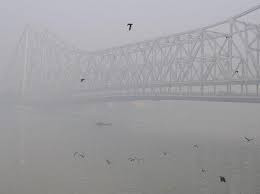Understanding Dengue Haemorrhagic Fever: Causes, Symptoms, Treatment, and Prevention

IIE DIGITAL DESK : Dengue Haemorrhagic Fever (DHF) is a severe and potentially life-threatening complication of dengue fever, a mosquito-borne viral infection prevalent in tropical and subtropical regions worldwide. As dengue cases continue to rise in many countries, public health officials emphasize the importance of recognizing the symptoms of DHF, understanding its causes, and adopting effective treatment and prevention strategies to reduce fatalities.
DHF is caused by the dengue virus, which has four distinct serotypes (DEN-1, DEN-2, DEN-3, and DEN-4). It is transmitted primarily through the bite of infected female Aedes mosquitoes, especially Aedes aegypti and Aedes albopictus. These mosquitoes thrive in stagnant water and urban environments, making dengue a common problem in densely populated areas with poor sanitation.
While most dengue infections result in mild fever and flu-like symptoms, DHF is a more severe form characterized by bleeding, blood plasma leakage, and low platelet counts. This progression usually occurs during a secondary infection when an individual who was previously infected with one serotype contracts another. The immune response in such cases can become exaggerated, leading to increased vascular permeability and hemorrhagic manifestations.
The symptoms of Dengue Haemorrhagic Fever typically start with high fever lasting two to seven days, severe headache, muscle and joint pain, nausea, and vomiting. As the illness progresses, warning signs include bleeding from the gums, nosebleeds, easy bruising, and the appearance of red spots or rashes on the skin. In severe cases, patients may experience plasma leakage causing fluid accumulation in the chest and abdominal cavities, leading to shock—a condition known as dengue shock syndrome (DSS).
Early recognition of DHF symptoms is crucial, as timely medical intervention can significantly reduce mortality rates. Health care providers often rely on blood tests to detect low platelet counts, hematocrit levels indicating plasma leakage, and the presence of dengue antibodies or viral RNA. Hospitalization is generally required for close monitoring, especially in severe cases.
Treatment for Dengue Haemorrhagic Fever focuses on supportive care, as there is no specific antiviral therapy available. Patients need careful fluid management to maintain blood pressure and prevent shock, alongside blood transfusions if bleeding is severe. Pain relief medications such as acetaminophen are recommended, while drugs like aspirin and non-steroidal anti-inflammatory drugs (NSAIDs) are avoided due to increased bleeding risk. Rest and nutritional support also play a vital role in recovery.
Preventive measures remain the most effective way to combat dengue and its severe forms. Eliminating mosquito breeding sites by removing stagnant water from flower pots, tires, buckets, and other containers is essential. Using mosquito repellents, installing window screens, and sleeping under insecticide-treated bed nets provide personal protection. Community awareness campaigns and government-led vector control programs involving fogging and larvicidal treatments also help reduce mosquito populations.
Vaccine development for dengue has been challenging due to the presence of multiple serotypes and the risk of severe disease upon subsequent infections. However, some vaccines have been licensed in select countries with recommendations limited to individuals with prior dengue exposure, underscoring the complexity of vaccination strategies.
Public health experts advise people living in or traveling to dengue-endemic areas to remain vigilant for symptoms and seek immediate medical care if warning signs appear. Education about recognizing the progression from dengue fever to dengue haemorrhagic fever can save lives and help reduce the burden on healthcare systems during outbreaks.
Dengue Haemorrhagic Fever is a dangerous complication of dengue infection marked by bleeding and plasma leakage. Caused by a mosquito-borne virus, it requires early diagnosis, supportive treatment, and robust preventive efforts focused on mosquito control and public awareness. As dengue continues to pose a significant health challenge globally, understanding DHF’s causes, symptoms, and management is critical for protecting vulnerable populations.
You might also like!















